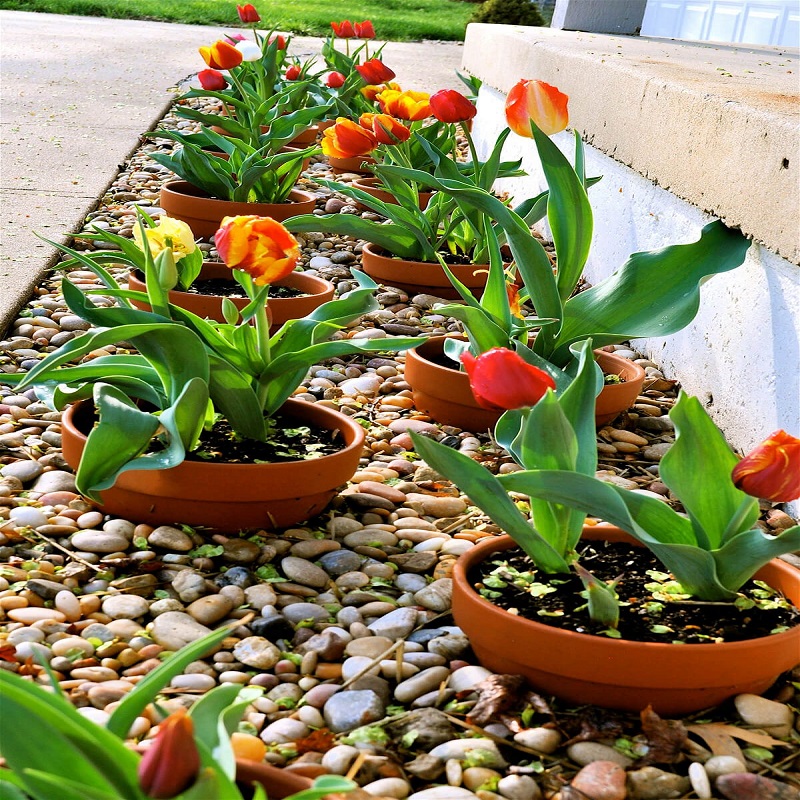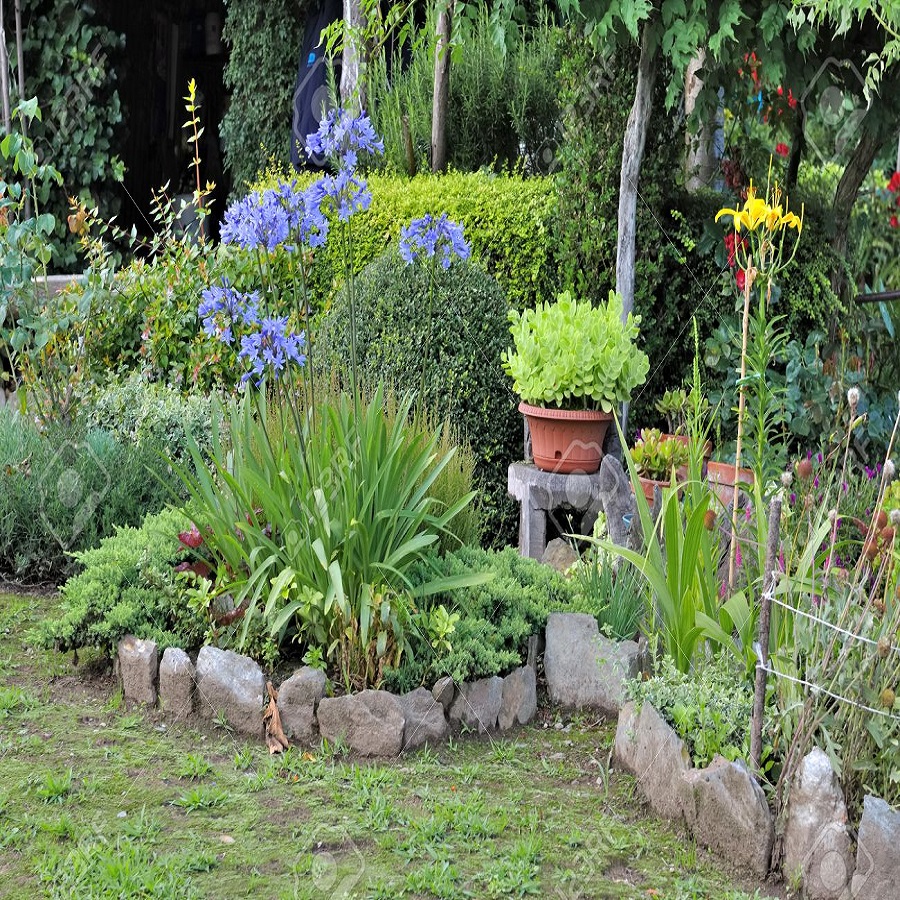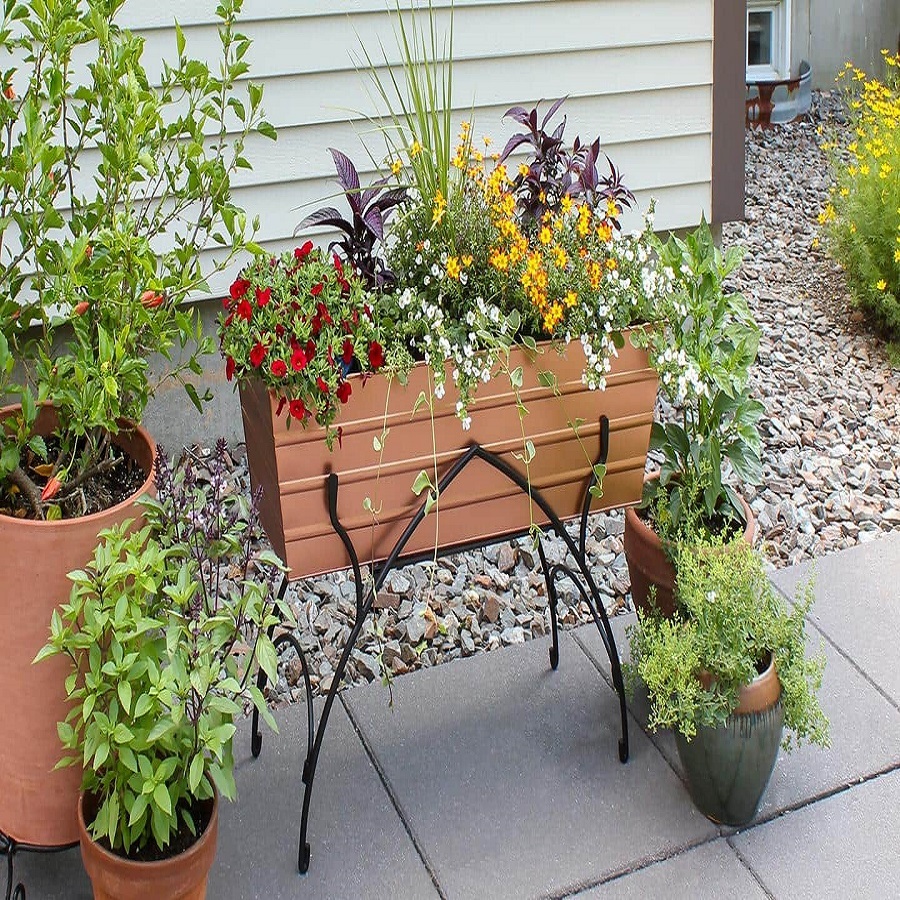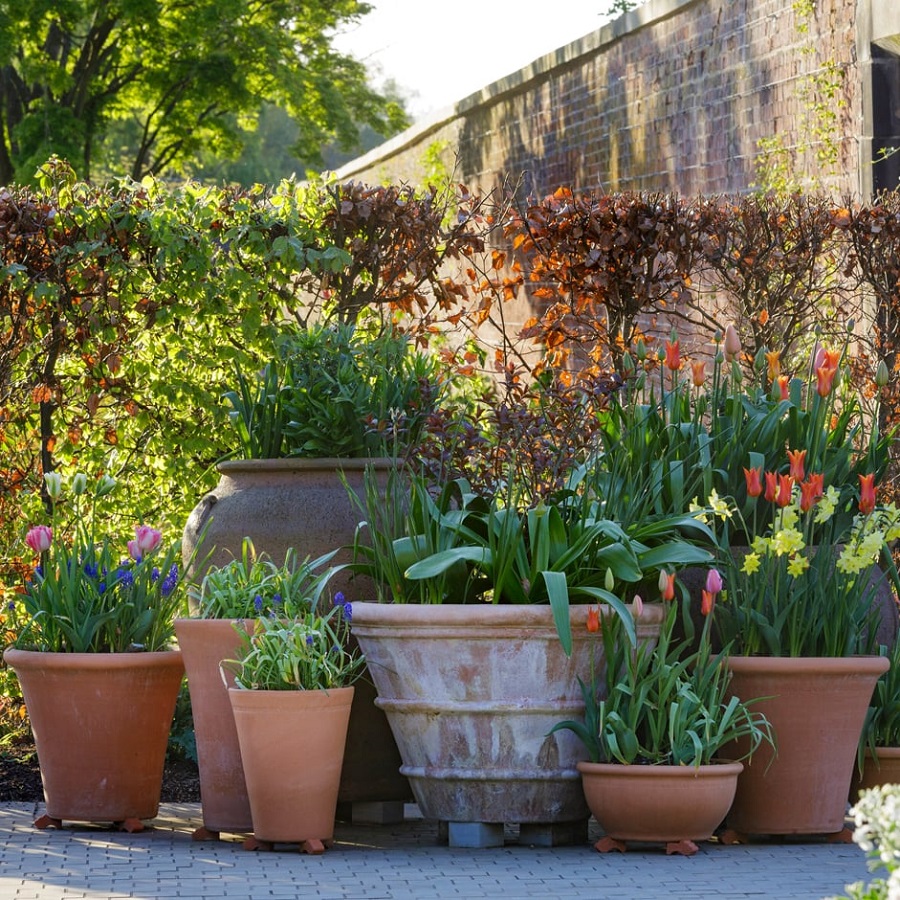Creating a stunning flower bed can transform your garden into a vibrant oasis. One of the best ways to enhance the beauty of your outdoor space is by strategically arranging pots within your flower bed. This article will explore various creative methods to arrange pots, ensuring maximum visual impact while considering plant health and aesthetics.
Understanding the Benefits of Using Pots in Flower Beds
Enhancing Visual Appeal
Pots are not just functional; they serve as decorative elements that can enhance the overall aesthetics of your garden. By incorporating various pot shapes, sizes, and colors, you can create dynamic visual contrasts that draw the eye. For instance, a cluster of tall, slender pots can add vertical interest, while shorter, round pots can provide a softer, more grounded look. Furthermore, using pots with unique textures or patterns can add an additional layer of depth and intrigue to your flower bed.
Flexibility in Planting
One of the significant advantages of using pots in your flower bed is the flexibility they offer. Unlike in-ground planting, pots allow you to experiment with different plant combinations without committing to a permanent arrangement. This flexibility is particularly beneficial for seasonal changes; you can easily swap out plants based on their blooming cycles or seasonal availability. Additionally, if you find that certain plants are not thriving in their designated spot, you can simply relocate the pot to a more suitable location.

Choosing the Right Pots for Your Flower Bed
Material Matters
When selecting pots for your flower bed, the material of the pots plays a crucial role in both aesthetics and plant health. Common materials include clay, plastic, metal, and ceramic, each offering unique benefits. Clay pots, for example, are porous and allow for good air circulation, making them ideal for plants that require well-draining soil. However, they can be heavy and breakable. Plastic pots are lightweight and available in various colors and styles, making them versatile, but they may not retain moisture as well as other materials. Consider the needs of your plants, the overall design of your flower bed, and your climate when choosing pot materials.
Size and Scale
The size of your pots is another vital factor to consider. A mix of pot sizes can create a sense of rhythm and movement within your flower bed. Larger pots can serve as focal points or anchors, while smaller pots can fill in gaps and add detail. When arranging pots, think about the scale of the surrounding plants; larger pots should be placed behind or alongside smaller ones to maintain proportion and prevent smaller plants from being overshadowed. Additionally, consider the height of your plants—tall plants should be paired with taller pots to ensure they remain visually balanced.
Color Coordination for Eye-Catching Arrangements
Complementary Colors
Color plays a pivotal role in the overall impact of your flower bed arrangements. Utilizing complementary colors can create striking contrasts that make your pots and plants stand out. For example, if your flower bed features predominantly green foliage, bright-colored pots can add a pop of vibrancy. Conversely, if your flowers are in bold shades, consider using neutral-toned pots to provide balance and allow the blooms to take center stage. Experiment with color combinations to discover what works best for your garden’s aesthetic.
Seasonal Color Schemes
In addition to considering complementary colors, think about seasonal color schemes. Certain colors evoke particular moods and feelings during different times of the year. In spring, pastel colors like soft pinks and yellows can create a fresh and cheerful atmosphere, while autumn might call for warm oranges and deep reds. Matching your pot colors to seasonal themes can enhance the overall experience of your garden, making it feel more cohesive and inviting throughout the year.

Arrangement Techniques for Maximum Impact
Grouping Pots
One effective method for arranging pots is to group them in clusters. This technique creates a focal point and adds dimension to your flower bed. When grouping pots, consider varying the heights and sizes to create visual interest. For instance, place a tall pot in the center surrounded by shorter pots to create a tiered effect. Alternatively, you can arrange pots in a circular or triangular pattern for added complexity. Ensure that the pots are close enough together to create a cohesive look, but not so tightly packed that they compete for attention.
Layering Plants
Layering plants within your pots is another strategy that can maximize visual impact. By choosing plants with varying heights, textures, and colors, you can create a lush, multi-dimensional display. Start with a tall plant, such as a small tree or large perennial, at the back of the pot, then add medium-height plants in the middle, and finish with trailing or low-growing plants at the front. This technique not only enhances the aesthetic appeal but also allows sunlight to reach all plants effectively, promoting healthy growth.
Considering Plant Health and Maintenance
Importance of Drainage
While aesthetics are essential, it’s crucial to prioritize plant health when arranging pots in your flower bed. Ensuring proper drainage is vital for preventing root rot and maintaining healthy plants. Choose pots with drainage holes, and consider adding a layer of gravel at the bottom for enhanced drainage. Additionally, monitor the moisture levels in your pots, especially during heavy rainfall or extreme heat, as potted plants can dry out faster than those planted directly in the ground.
Plant Compatibility
When arranging pots, always consider the compatibility of the plants you choose. Group plants with similar water and light requirements to ensure they thrive together. For example, placing drought-tolerant succulents alongside moisture-loving ferns may lead to competition for resources, resulting in poor plant health. Research the specific needs of your chosen plants and arrange them accordingly to create a harmonious and thriving flower bed.
Utilizing Vertical Space with Pots
Vertical Gardening Techniques
In smaller gardens or spaces with limited ground area, utilizing vertical gardening techniques can significantly enhance your flower bed’s visual appeal. Consider using wall-mounted planters or shelving units to create a layered effect with your pots. By placing pots at various heights on a vertical structure, you can draw the eye upward and create a sense of depth. This approach not only maximizes space but also allows for greater diversity in your plant selection.
Hanging Pots
Hanging pots are another excellent way to incorporate vertical elements into your flower bed. They can add texture and color while freeing up ground space for additional plants. Hanging pots can be suspended from eaves, fences, or even tree branches, creating a whimsical, floating garden effect. Choose trailing plants for these pots to enhance the cascading look and further draw attention to your flower bed.

Seasonal Arrangements: Adapting to Change
Rotating Plants Seasonally
To keep your flower bed looking fresh and vibrant year-round, consider rotating your potted plants seasonally. This practice allows you to showcase different plants at different times of the year, keeping the arrangement dynamic and engaging. For instance, spring can feature tulips and pansies, while summer can bring in vibrant petunias and geraniums. By planning ahead and knowing which plants bloom during specific seasons, you can maintain visual interest and color throughout the year.
Incorporating Seasonal Decor
In addition to rotating plants, incorporating seasonal decor can further enhance your flower bed’s impact. Consider adding themed decorations, such as pumpkins in the fall or festive ornaments during the winter holiday season. These elements can create a cohesive theme and make your flower bed a focal point during various celebrations and holidays.
Conclusion: Creating Lasting Impressions with Your Flower Bed
Arranging pots in your flower bed creatively can significantly elevate the beauty and functionality of your outdoor space. By understanding the benefits of using pots, selecting the right materials and sizes, coordinating colors, and employing innovative arrangement techniques, you can create a visually striking and harmonious garden. Remember to prioritize plant health and maintenance while considering seasonal changes to keep your flower bed flourishing throughout the year. With these tips, you’ll create a stunning garden that leaves a lasting impression on all who visit. Happy gardening!
